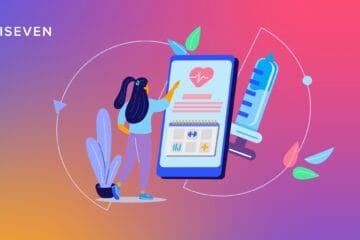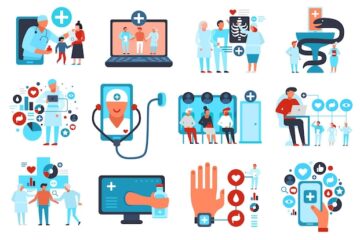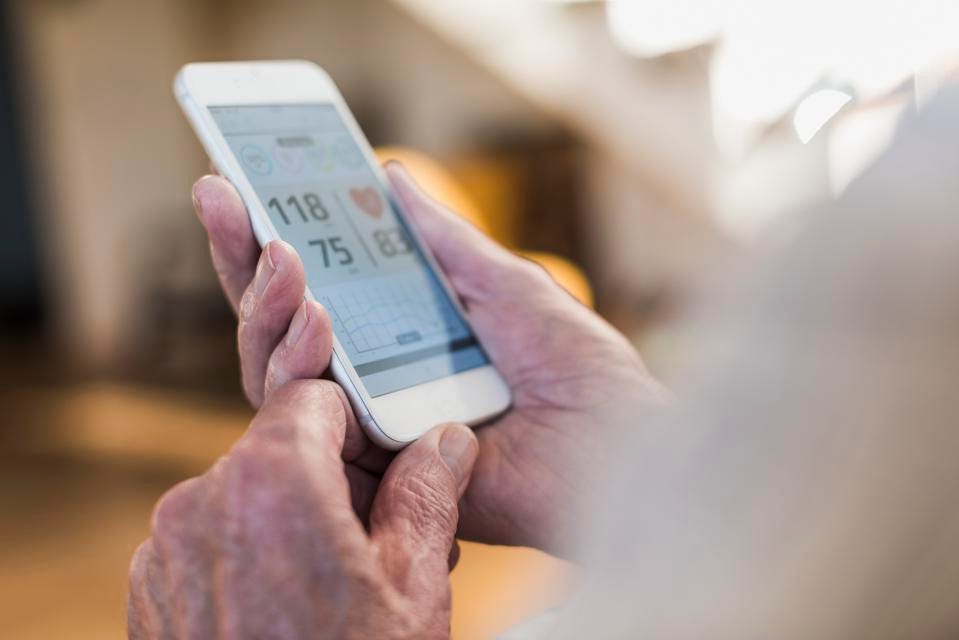
Contents
Abstract
Widespread use of health information technology (IT) could potentially increase patients’ access to their health information and facilitate future goals of advancing patient-centered care. Despite having increased access to their health data, patients do not always understand this information or its implications, and digital health data can be difficult to navigate when displayed in a small-format, complex interface. In this paper, we discuss two forms of patient-facing health IT tools—patient portals and applications (apps)—and highlight how, despite several limitations of each, combining high-yield features of mobile health (mHealth) apps with portals could increase patient engagement and self-management and be more effective than either of them alone. Patient portal adoption is variable, and due to design and interface limitations and health literacy issues, many people find the portal difficult to use. Conversely, apps have experienced rapid adoption and traditionally have more consumer-friendly features with easy log-in access, real-time tracking, and simplified data display. These features make the applications more intuitive and easy-to-use than patient portals. While apps have their own limitations and might serve different purposes, patient portals could adopt some high-yield features and functions of apps that lead to engagement success with patients. We thus suggest that to improve user experience with future portals, developers could look towards mHealth apps in design, function, and user interface. Adding new features to portals may improve their use and empower patients to track their overall health and disease states. Nevertheless, both these health IT tools should be subjected to rigorous evaluation to ensure they meet their potential in improving patient outcomes.
1. Introduction
There is growing interest in electronic access to health information and the use of digital data for both disease and health-related tracking. Widespread use of health information technology (IT) could potentially increase patients’ access to their health information and facilitate future goals of advancing patient-centered care.1 For example, health IT can be used to facilitate information exchange with clinicians and instruct patients when to act upon clinical issues, such as out of range physiologic parameters, follow-up of test results, and complications of medication use.2 Tools such as personal health records, patient portals, and various mobile health (mHealth) applications (apps) have been developed to help patients engage in their own care. Already, a significant number of patients use health IT; therefore, it is essential that patient-facing health IT be tailored to their needs. In this paper, we discuss two forms of patient-facing health IT tools—patient portals and apps—to highlight how, despite several limitations of each, combining high-yield features of mHealth apps with portals could increase patient engagement and self-management and be more effective than either of them alone. This could potentially improve both patient experience and outcomes related to patient-facing health IT.
Patient-facing health IT should be simply designed to encourage and sustain use and engage patients at various levels of health literacy.3 Patients increasingly express interest in being involved in medical decision-making and desire access to their health information.4 Despite having increased access to their health data, patients do not always understand this information or its implications, and digital health data can be difficult to navigate when displayed in a small-format, complex interface. For example, test results are not always displayed in a way that is easy for the patient to understand (e.g., with normal ranges clearly shown, along with implications of abnormal results). There is also little evidence that patient portal design addresses patients’ needs outside of meeting the “meaningful use” patient engagement criteria.5 It is imperative to keep patients’ needs in mind because patient-facing health IT users in the long run will not be just the early adopter health and technology “enthusiasts,” but regular people in need of better disease control and management.6
2. Emergence of patient-facing health IT
According to Pew Research, 7 in 10 U.S. adults say they track at least one health indicator.7 Although the number of patients interested in accessing their test results and tracking their health parameters has increased, patient portal use nationally is variable.5, 8 For example, Athenahealth reports a 25% adoption rate across 1100 fee-for-service provider groups.9 Kaiser Permanente, an institution that has used portals for over a decade, reports that as of the third quarter of 2015, about 70% (5.2 million patients) of eligible adult members registered to use its My Health Manager patient portal.10 Group Health Cooperative (Seattle, WA) reports 73% of enrollees in Group Health Practices are registered and ID-verified to use its patient portal website as well as its mobile app, which offers the same constellation of services as the patient portal.11 However, registration rates and ID verifications do not account for the people who register but do not actively use the portal. Based on anecdotal data from a project we are conducting to determine patient preferences when viewing test results through portals, several patients have reported login issues and difficulty navigating portals.12
Conversely, the use of “easy to access” mHealth apps has increased dramatically over the past few years. Estimates suggest that by 2018, half of all smartphone and tablet users will have downloaded a mHealth app.13 The rise in health apps and health tracking software can be partially attributed to peoples’ growing interest in wearable devices and new applications that enable and engage patients to do more for their health care. Further, many apps rely heavily on social networking and the community experience allowing users to continuously track their activities and compare themselves with friends, family, and the larger community. Compared to most portals, apps appear to be more consumer-centric in design, and therefore, easier to use.
3. Pitfalls and promises of patient portals and health applications
As a secure online website providing patients access to their health information, the portal aims to improve quality of care by engaging patients as active participants in their care. While portal functions vary, most allow patients to view laboratory test results, immunizations, medications, and allergies, as well as to send secure messages to their physician.14 However, the portal can be difficult to navigate, and patients may struggle to understand their medical information. For instance, in our previous work we found that test result display and graphing were often confusing to patients, and they reported that portals were not user-friendly.15 A recent systematic review of patient and provider attitudes toward patient portal use found that the most negatively-perceived feature was user-friendliness, making the portal difficult to navigate.16 Our work exploring patient’s experiences using the portal to view test results echoes this finding, as many patients reported having difficulty locating their test results in the portal.17 When patients interact with their test results, they need to know the purpose of the test, the interpretation of the result, and next steps.18 Addressing these issues may help improve patient-centered care.
On the other hand and for a different engagement purpose, several companies have designed and created various tracking applications to encourage people to actively participate in their health. Applications, such as Mango Health (San Francisco, CA), Fitbit (San Francisco, CA), and Apple (Cupertino, CA) iPhone 6’s built in Health app, have consumer-friendly features with easy log-in access, real-time tracking, and simplified data display.19 From a patient standpoint, these features likely make the applications more intuitive and easy-to-use than patient portals. Furthermore, mHealth apps live on mobile devices, which make them easily accessible with little effort to login after setting up the account. This ubiquitous access is one of the reasons mobile technology is rapidly replacing desktop technologies.
Although apps might serve a different purpose, patient portals could adopt certain app features that lead to better engagement success with patients. Mobile apps have the capability to record several types of data, such as activity level, nutrition, and sleep, as well as data related to a consumer’s condition or disease, such as diabetes or asthma. For instance, Apple’s ResearchKit, although not designed as a health tracking application, offers several features that could be useful for health monitoring. It collects data and simultaneously encourages users to track their health by prompting daily health assessments. mHealth apps offer symptom management activities, which are not a standard feature universally available in patient portals.16 For example, LifeMap Solutions (San Jose, CA) has an application for Chronic Obstructive Pulmonary Disease management that provides medication reminders and tracks users’ symptoms to identify abrupt declines in their condition. Sentrian (Aliso Viejo, CA), a patient intelligence company, uses biosensors (i.e., blood glucose biosensor) to detect deteriorating health of patients to prevent avoidable hospitalizations.20 There are also apps that allow users to view their test results, such as Healthvana (Los Angeles, CA) and Labcorp (Research Triangle Park, NC). Healthvana, for instance, provides patients with interpretation of sexually transmitted infection results and follow-up instructions.21
While it is not clear if apps influence patient behavior, condition-specific apps may help patients improve outcomes.22, 23 Nevertheless, mHealth apps’ features and functionality do not extend widely to provide users access to their institutionally-generated health data. At this point we also do not really know the value of the data generated by mHealth apps, and researchers are still determining how to best use the data from new apps like ResearchKit.24, 25 These apps are also not heavily regulated and could contain poor quality or incorrect information, and some apps have been found to produce incorrect or inconsistent data.26, 27 Despite increasing use of mHealth apps, up to 80% of apps are abandoned after only two weeks, suggesting more research is needed to understand what features engender longevity.28 Additionally, a recent study regarding health app use among vulnerable populations found that participants lacked confidence with the technology and expressed frustration with design and navigation. The authors called for participatory design, testing, and training with diverse patient populations to improve use.29
While mobile apps may offer more personalized interactions, it has been suggested that these apps need to be connected to personal health records to be effective and improve patient outcomes.30 However, there are legal concerns related to data protection and some uncertainty as to when and if mHealth apps fall under HIPAA or a developer’s own privacy policy, if available.31, 32, 33, 34 Thus, additional research must examine and determine the usefulness, relevance, credibility, and accuracy of health apps, as well as how they are used by patients and health care professionals.35
4. Socio-technical comparison of patient portals and health applications
In this section, we compare and contrast apps and portals using a sociotechnical lens. In our previous work, we have used an eight-dimension socio-technical model to evaluate other health IT innovations,36 interventions,37 applications,38 and devices39 implemented within a health care system.1 In Table 1, we compare apps and portals along the eight dimensions.




